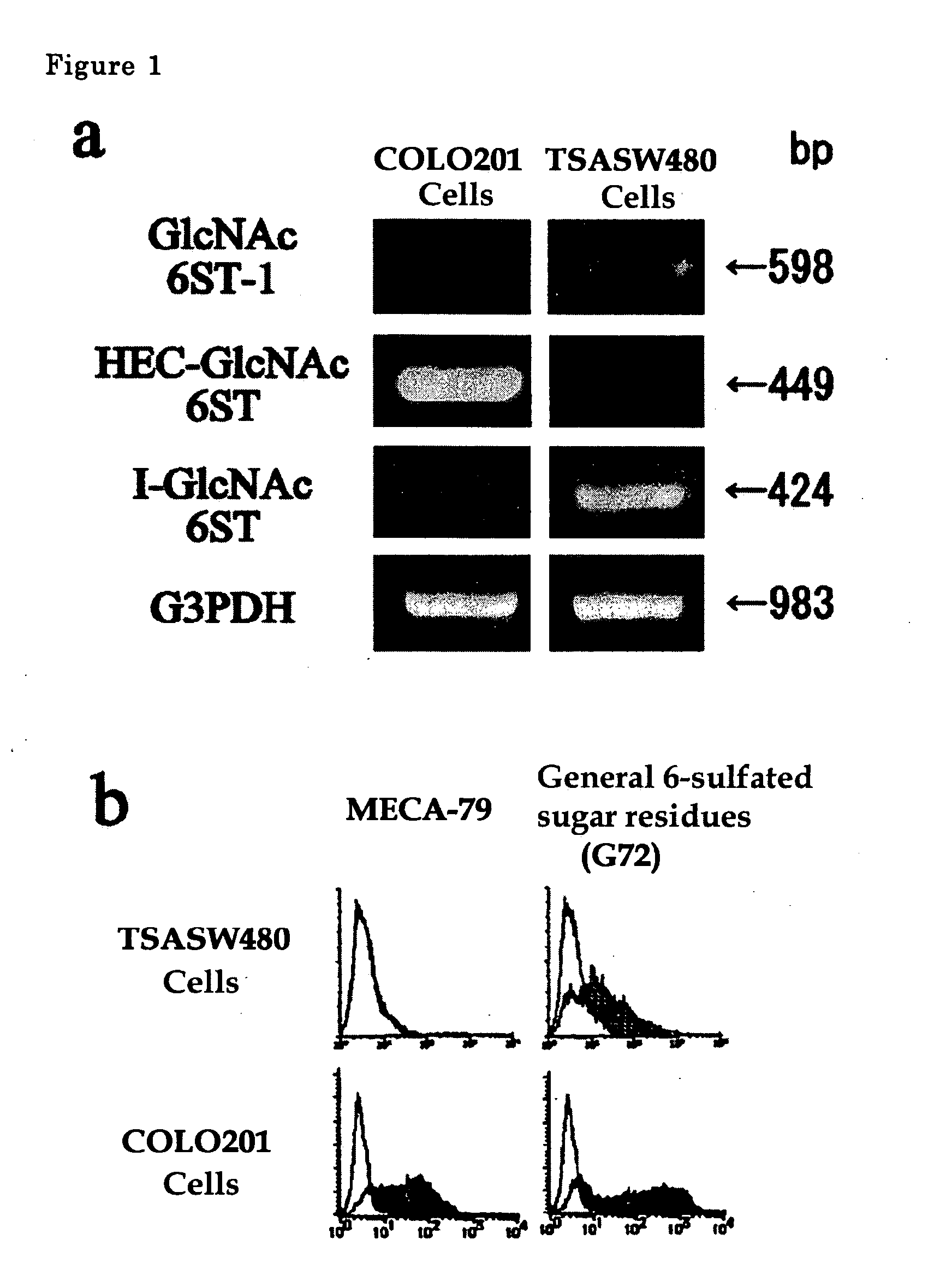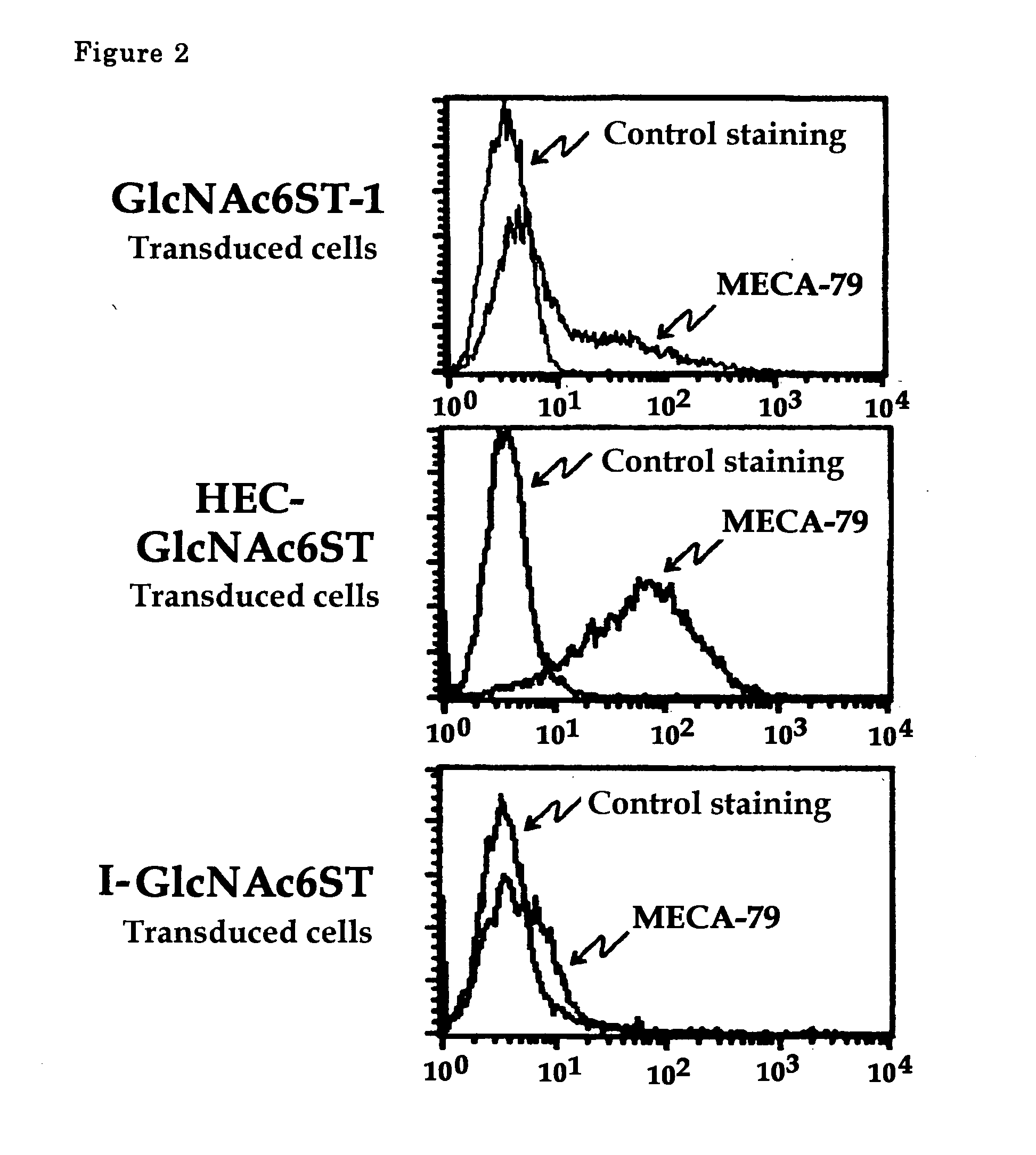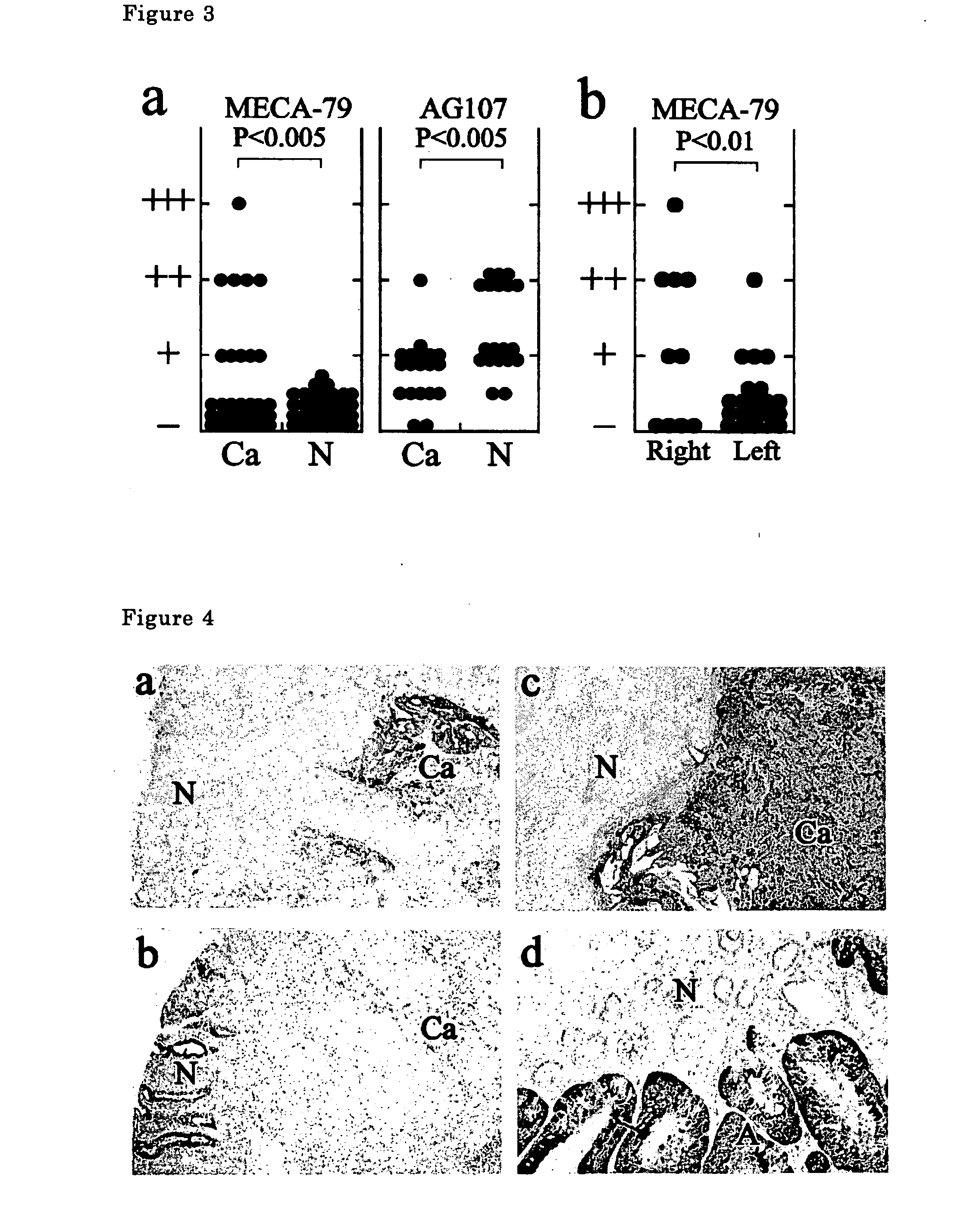Method of examining colon cancer and colon adenoma
a colon cancer and colon adenoma technology, applied in the field of colon cancer and colon adenoma detection, can solve the problems of insufficient positive rate of methods, inability to find suitable methods of detection, and inability to establish the actual system for colorectal cancer diagnosis
- Summary
- Abstract
- Description
- Claims
- Application Information
AI Technical Summary
Problems solved by technology
Method used
Image
Examples
example 1
[0038] Gene expression of GlcNAc-6-sulfotransferase isozymes was examined by RT-PCR on human-derived colorectal cancer cells and on normal colorectal epithelial cells. In the RT-PCR analysis, PCR primers for detection of the expression of HEC-GlcNAc6ST gene (Genebank, AF131235) are synthetic oligonucleotides of SEQ ID NO. 1 for upper strand side and those of SEQ ID NO. 2 for lower strand side (Tm=59° C.), those for GlcNAc6ST-1 gene (Genebank, AB011451). are synthetic oligonucleotides of SEQ ID NO. 3 for upper strand side and those of SEQ ID NO. 4 for lower strand side (Tm=62° C.) and those for I-GlcNAc6ST gene (Genebank, AF176838) are synthetic oligonucleotides of SEQ ID NO. 5 for upper strand side and those of SEQ ID NO. 6 for lower strand side (Tm=60° C.).
[0039] The results are shown in FIG. 1a. COLO201 cells are typical cells showing colorectal cancer pattern, which expresses strongly HEC-GlcNAc6ST gene and little GlcNAc6ST-1 and I-GlcNAc6ST genes. TSA-SW480 cells treated SW480 ...
example 2
[0041] In this example, cells transduced with HEC-GlcNAc6ST gene, GlcNAc6ST-1 gene or I-GlcNAc6ST gene were prepared. Then flowcytometric analysis for these cells was performed using MECA-79 antibody.
[0042] For the preparation of cells transduced with HEC-GlcNAc6ST gene, the gene (Genebank, AF131235) inserted into pcDNA3.1 vector was used. For those with GlcNAc6ST-1 gene, the gene (Genebank, AB011451) inserted into pIRES1hygro vector was used. For those with I-GlcNAc6ST gene, the gene (Genebank, AF176838) inserted into pcDNA3.1 vector was used. The flowcytometric analysis was performed as in Example 1.
[0043] The results are shown in FIG. 2. MECA-79 antibody reacted strongly with those cells transduced with HEC-GlcNAc6ST, but reacted with slightly those cells transduced with GlcNAc6ST gene or I-GlcNAc6ST gene.
example 3
[0044] Colorectal cancer tissues derived from patients (31 cases) were stained with immunohistological staining using MECA-79 antibody. For immunohistological staining, frozen sections with 10 μm thick were used, 1.0 μg / ml MECA-79 antibody was used as the first antibody, and a reagent kit (Vectastain) of Vecta Co. containing anti-rat IgM antibody was used as the second antibody according to the protocol of the company.
[0045] The results are shown in FIG. 3. The antibody does not react with non-cancer colorectal mucosa (N) (0 case / 31 ca31 cases, 32%). Positive reaction rate is higher for cancers in right-half colorectum (60%) and lower for those in left-half colon (19%).
[0046] A typical stained photographs are shown in FIG. 4.
[0047]FIG. 4a shows the stained photograph of a colorectal cancer tissue (ca) and a colorectal non-cancer tissue (N) of a patient. The colorectal cancer tissue is strongly stained but the non-cancer tissue is little stained.
[0048]FIG. 4b shows the photograph...
PUM
| Property | Measurement | Unit |
|---|---|---|
| Reactivity | aaaaa | aaaaa |
Abstract
Description
Claims
Application Information
 Login to View More
Login to View More - R&D
- Intellectual Property
- Life Sciences
- Materials
- Tech Scout
- Unparalleled Data Quality
- Higher Quality Content
- 60% Fewer Hallucinations
Browse by: Latest US Patents, China's latest patents, Technical Efficacy Thesaurus, Application Domain, Technology Topic, Popular Technical Reports.
© 2025 PatSnap. All rights reserved.Legal|Privacy policy|Modern Slavery Act Transparency Statement|Sitemap|About US| Contact US: help@patsnap.com



